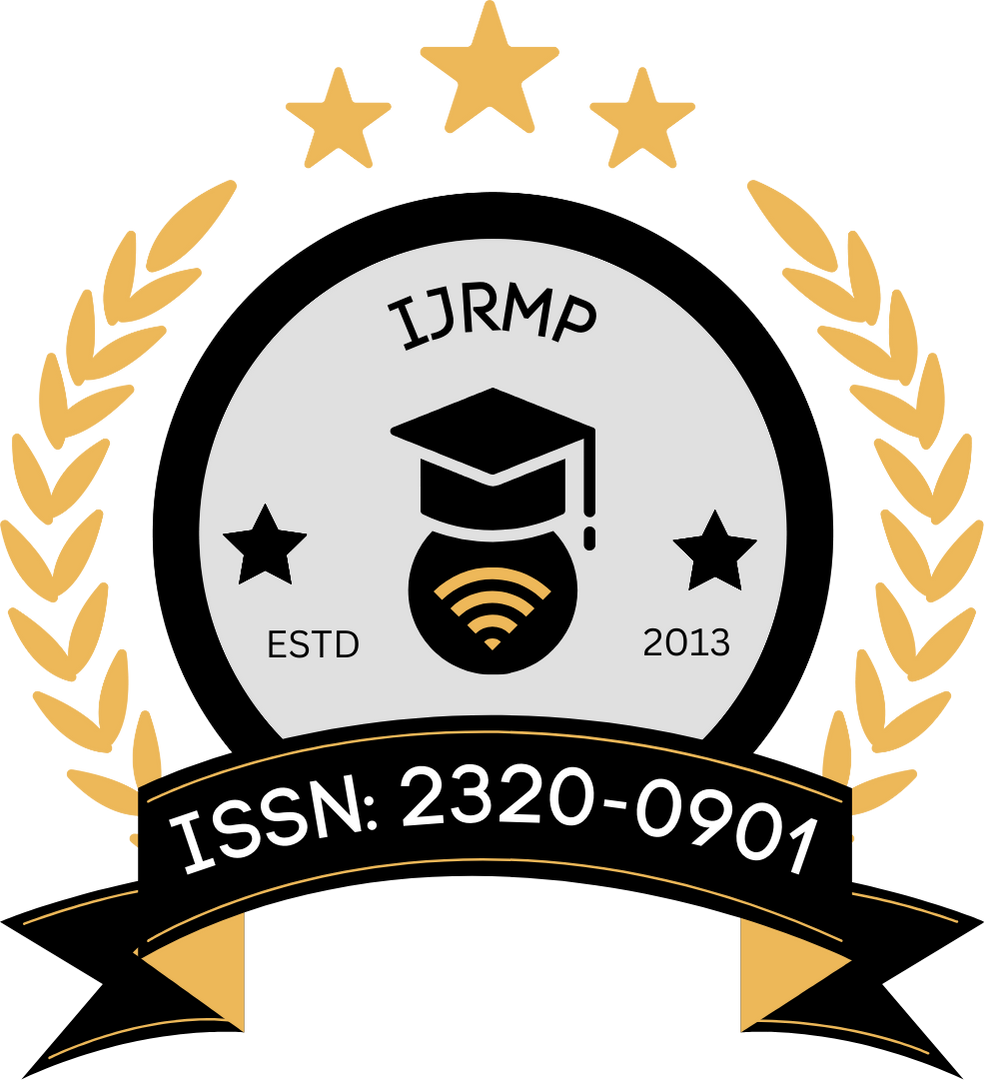![]()
Nilesh Thombre
Independent Researcher
Maharashtra, India
Abstract
Synthetic biology has emerged as a transformative discipline that synergizes biology and engineering to design and construct novel biological systems. One of its most promising applications lies in the creation of personalized pharmaceuticals tailored therapeutic agents that cater to the unique genetic and biochemical profiles of individuals. This manuscript explores the role of synthetic biology in revolutionizing pharmaceutical development by enabling highly targeted, adaptive, and responsive therapies. The paper reviews foundational concepts, key advances, biosynthetic platforms, genetic circuits, and modular chassis design in the context of drug synthesis and delivery. It also examines case studies in cancer therapy, metabolic disorders, and rare diseases to highlight real-world applications. Finally, it assesses the methodological frameworks used in developing synthetic biology-based drug platforms and evaluates their impact on treatment efficacy, specificity, and safety.
Keywords
Synthetic biology, personalized medicine, genetic circuits, pharmaceutical biosynthesis, modular chassis, targeted therapy, gene editing, precision healthcare
References
- Balakrishnan, B., Sly, W. S., & Tebbets, J. R. (2013). Gene therapy for lysosomal storage disorders: Recent advances and future prospects. Current Gene Therapy, 13(2), 127–144. https://doi.org/10.2174/1566523211313020006
- Chan, C. T. Y., Lee, J. W., Cameron, D. E., Bashor, C. J., & Collins, J. J. (2015). “Deadman” and “Passcode” microbial kill switches for bacterial containment. Nature Chemical Biology, 11(9), 672–676. https://doi.org/10.1038/nchembio.1896
- Chen, Z., Wang, Z., Guo, C., & Zhao, Y. (2018). Synthetic-biology-based glucose-responsive insulin delivery: Prospects and challenges. Chemical Society Reviews, 47(13), 4685–4706. https://doi.org/10.1039/C8CS00145F
- Danino, T., Prindle, A., Kwong, G. A., Skalak, M., Li, H., Allen, K., … & Bhatia, S. N. (2015). Programmable probiotics for detection of cancer in urine. Science Translational Medicine, 7(289), 289ra84. https://doi.org/10.1126/scitranslmed.aaa3519
- Elowitz, M. B., & Leibler, S. (2000). A synthetic oscillatory network of transcriptional regulators. Nature, 403(6767), 335–338. https://doi.org/10.1038/35002125
- Gardner, T. S., Cantor, C. R., & Collins, J. J. (2000). Construction of a genetic toggle switch in Escherichia coli. Nature, 403(6767), 339–342. https://doi.org/10.1038/35002131
- Keasling, J. D. (2010). Manufacturing molecules through metabolic engineering. Science, 330(6009), 1355–1358. https://doi.org/10.1126/science.1193990
- Khalil, A. S., & Collins, J. J. (2010). Synthetic biology: Applications come of age. Nature Reviews Genetics, 11(5), 367–379. https://doi.org/10.1038/nrg2775
- Nielsen, A. A. K., Der, B. S., Shin, J., Vaidyanathan, P., Paralanov, V., Strychalski, E. A., … & Voigt, C. A. (2016). Genetic circuit design automation. Science, 352(6281), aac7341. https://doi.org/10.1126/science.aac7341
- Nissim, L., Wu, M. R., Pery, E., Binder-Nissim, A., Suzuki, H. I., Stupp, D., … & Lu, T. K. (2017). Synthetic RNA-based immunomodulatory gene circuits for cancer immunotherapy. Cell, 171(5), 1138–1150.e15. https://doi.org/10.1016/j.cell.2017.09.049
- Noireaux, V., & Libchaber, A. (2004). A vesicle bioreactor as a step toward an artificial cell assembly. Proceedings of the National Academy of Sciences, 101(51), 17669–17674. https://doi.org/10.1073/pnas.0408236101
- Ro, D.-K., Paradise, E. M., Ouellet, M., Fisher, K. J., Newman, K. L., Ndungu, J. M., … & Keasling, J. D. (2006). Production of the antimalarial drug precursor artemisinic acid in engineered yeast. Nature, 440(7086), 940–943. https://doi.org/10.1038/nature04640
- Roybal, K. T., Rupp, L. J., Morsut, L., Walker, W. J., McNally, K. A., Park, J. S., & Lim, W. A. (2016). Precision tumor recognition by T cells with combinatorial antigen-sensing circuits. Cell, 164(4), 770–779. https://doi.org/10.1016/j.cell.2016.01.033
- Vickers, C. E., Blank, L. M., & Krömer, J. O. (2010). Chassis cells for industrial biochemical production. Nature Chemical Biology, 6(12), 875–877. https://doi.org/10.1038/nchembio.482
- Way, J. C., Collins, J. J., Keasling, J. D., & Silver, P. A. (2014). Integrating biological redesign: Where synthetic biology came from and where it needs to go. Cell, 157(1), 151–161. https://doi.org/10.1016/j.cell.2014.01.029
- Xie, M., Haellmigk, R., & Fussenegger, M. (2016). Synthetic gene circuits for pharmacologic control of insulin production. Journal of the American Chemical Society, 138(38), 12655–12664. https://doi.org/10.1021/jacs.6b06597
- Xie, M., & Fussenegger, M. (2018). Designing cell function: Assembly of synthetic gene circuits for cell biology and biomedical applications. Nature Reviews Molecular Cell Biology, 19(8), 507–525. https://doi.org/10.1038/s41580-018-0024-z
- Yadav, V. G., De Mey, M., Lim, C. G., Ajikumar, P. K., & Stephanopoulos, G. (2012). The future of metabolic engineering and synthetic biology: Towards a systematic practice. Metabolic Engineering, 14(3), 233–241. https://doi.org/10.1016/j.ymben.2012.02.001
- Ye, H., Xie, M., & Fussenegger, M. (2013). Synthetic mammalian gene circuits for molecular perfusion control of cytokine delivery. Science, 341(6145), 1357–1361. https://doi.org/10.1126/science.1241244
- Zhang, J., Jensen, M. K., & Keasling, J. D. (2015). Development of biosensors and their application in metabolic engineering. Current Opinion in Chemical Biology, 28, 1–8. https://doi.org/10.1016/j.cbpa.2015.05.011
